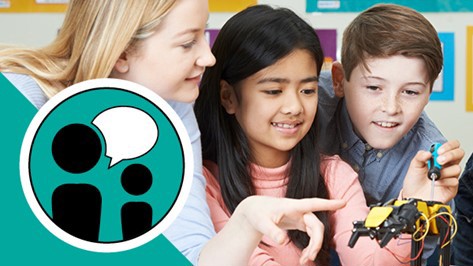
Heating effect of infrared
Considering the heating effects of infrared energy and how this is used in a range of products
In this activity students will consider the heating effects of infrared energy, and how this is used in a range of products. They will then develop an experiment to measure the heat output from different devices.
It’s one of a set of resources developed to aid the teaching of the secondary national curriculum, particularly KS3, supporting the teaching in science (specifically physics) and design & technology (D&T).
Activity: Considering the heating effects of infrared energy and how this is used in a range of products
At the start of the activity students will brainstorm different ways energy appears in the home and what colour they associate with heat. In pairs, students will then discuss the ultimate fate of most energy (becoming heat) and why devices like TVs and computers get warm.
They’ll view our Cooking Devices presentation to identify the energy used to heat food. They’ll also examine appliances that produce infrared heat before designing an experiment to measure how much heat different devices produce.
Results must be recorded using our Results Table worksheet so that they can be analysed in terms of which devices heat most effectively. Students will then be asked a series of questions which reflect on how infrared energy is connected to the temperature changes.
Download our activity overview for a detailed lesson plan on infrared energy.
The engineering context
Understanding the principles of infrared heat can lead engineers to create and improve devices that warm objects directly, unlike convection heating which heats the air around an object.
Suggested learning outcomes
At the end of this lesson students will know how light and infrared travels as a wave. They’ll also understand the electromagnetic spectrum and its applications., as well as convection and the link between frequency and wavelength.
Download our activity sheet and other teaching resources
The activity sheet includes teachers’ notes, useful web links, and links (where appropriate) to the national curriculum in each of the four devolved nations; England, Northern Ireland, Scotland and Wales.
All activity sheets and supporting resources are free to download, and all the documents are fully editable, so you can tailor them to your students’ and your schools’ needs.
Download our classroom lesson plan and presentation below.
Please do share your highlights with us @IETeducation
Available Downloads

Activity overview
Heating Effect of Infra-Red activity description, teachers' notes and curriculum links.

Presentation
Considering the different forms of heat energy that can be used to cook food.

Worksheet
Results table - for students to compare how each of the listed devices differ in temperature.


